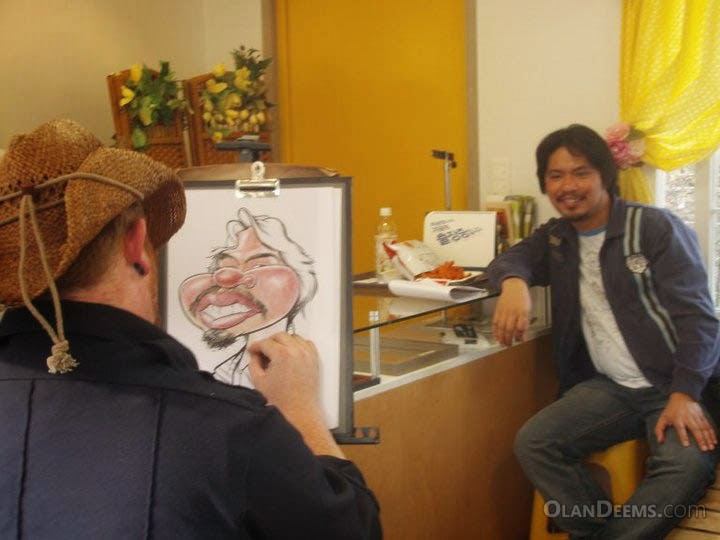Discover the Power of Caricature Drawing: Elevate Your Artistic Skills Today
Drawing impressive and unique caricatures is a skill that can be learned and developed with practice. Whether or not you have a natural talent, anyone can create professional-looking caricatures with the proper techniques and mindset. Here are some tips to help you improve your caricature drawing skills:
 1. Observe and Imagine:
1. Observe and Imagine:
Look keenly at your surroundings and daily activities for inspiration. Pay attention to the people and objects around you, and let your imagination run wild. Caricatures can be based on real-life observations or random imaginings.
While caricatures are not typically realistic, having a solid grasp of realistic drawing can enhance your ability to distort reality believably. Focus on exaggerating key features defining the subject’s personality or appearance, such as a broad smile or eyebrows. This exaggeration is what makes caricatures so impactful.
2. Study Your Subject:
When drawing from real-life references, such as a particular object or person, take the time to observe and study the subject. Notice the unique features, expressions, and angles. This attention to detail will help you create more realistic and accurate caricatures.
Great caricaturists are keen observers. Like a surveyor measures land, an artist must measure the subtle nuances of a subject’s face and expressions. If drawing from life isn’t impossible, study your subject or photos. Notice how emotions are conveyed through facial features and how different angles of the face can change the viewer’s perception of those features.
3. Combine Basic Shapes:
Drawing caricatures simplifies complex features into basic shapes. Practice breaking down facial features into geometric forms such as circles, triangles, and rectangles. Then, gradually add details and exaggerations to achieve the desired caricature effect.
Mastering caricature begins with a solid understanding of basic drawing techniques. While some may have a natural inclination for sketching, drawing is a skill anyone can develop with practice. Start by combining simple shapes and lines to construct primary forms. Pay attention to the thickness and quality of lines, as these can significantly affect the expression of your drawing.
4. Play with Lines and Colors:
Experiment with different line weights to add depth and dimension to your drawings. Thin lines can create delicacy, while thick lines can emphasize certain features. Additionally, consider using colors to enhance lightness and darkness in your caricatures.
Colors and shading play a crucial role in the depth and life of your caricature. Use them to highlight contrasts within the drawing, emphasizing features and adding dimension. The proper shading techniques can make your caricature pop off the page, adding an element of drama and intensity.
5. Maintain Consistent Emotions:
To create a unified and harmonious presentation, draw consistent emotions from start to finish. Like planning a dream house, your drawings should reflect your unique ideas and convey the desired emotions.
Just as a builder uses a consistent plan to construct a house, a caricaturist must maintain emotional consistency throughout the drawing process. This consistent approach helps create a unified, harmonious piece that captures the subject’s essence. Your drawings should reflect a clear mood or personality from the first stroke to the last.
 6. Practice Regularly:
6. Practice Regularly:
Constant practice is the key to improving your drawing skills. Draw as often as possible and keep a sketchbook handy to capture ideas and inspirations. Use your environment as a reference source, combining observation with imagination to create art.
A sketchbook is an artist’s best friend. Regularly drawing from life enhances your ability to see and capture the world. This continuous practice will improve your skills and keep your ideas flowing, allowing you to experiment with new techniques and concepts.
7. Develop a Comprehensive Perspective:
Caricature drawing goes beyond capturing physical features. It involves understanding how expressions, angles, and perceptions influence a subject’s uniqueness. Train yourself to see things comprehensively and dig deeper into the intricacies that make each subject different.
After completing a drawing, take time to reflect on your work. Ask yourself what worked and what didn’t. Perhaps the exaggeration was too subtle, or the emotions did not translate as planned. Use this reflection to adjust your approach in future drawings.
Share your work with others and get feedback. Engaging with a community of artists can provide new perspectives and insights that can help refine your technique and expand your artistic horizons.
When creating caricatures, the goal is to capture your subject’s essence while adding your unique style and exaggerations. In the case of Engr. Olan Deems’ caricature, the artist aimed to represent his personality and features playfully. Engr. Olan Deems humorously commented that the caricature successfully represents the real him, “Nope! Because it represents the Real me!” This underscores the personal connection that caricatures can evoke, making them a powerful medium for expression.
Remember, becoming a skilled caricature artist takes time and practice. So keep honing your skills, experimenting with different techniques, and, most importantly, have fun with your drawings.
Are you looking to enhance your company’s image? Whether it’s through a polished company profile, a dynamic website, compelling graphics, eye-catching signage, professional tarpaulins, distinctive business cards, informative brochures, or engaging menus, we are here to bring your vision to life.
Elevate Your Brand with Our Expert Design Services…
Please don’t hesitate to call or email us to discuss your specific needs and how we can assist. We look forward to collaborating with you to create designs representing your business.










